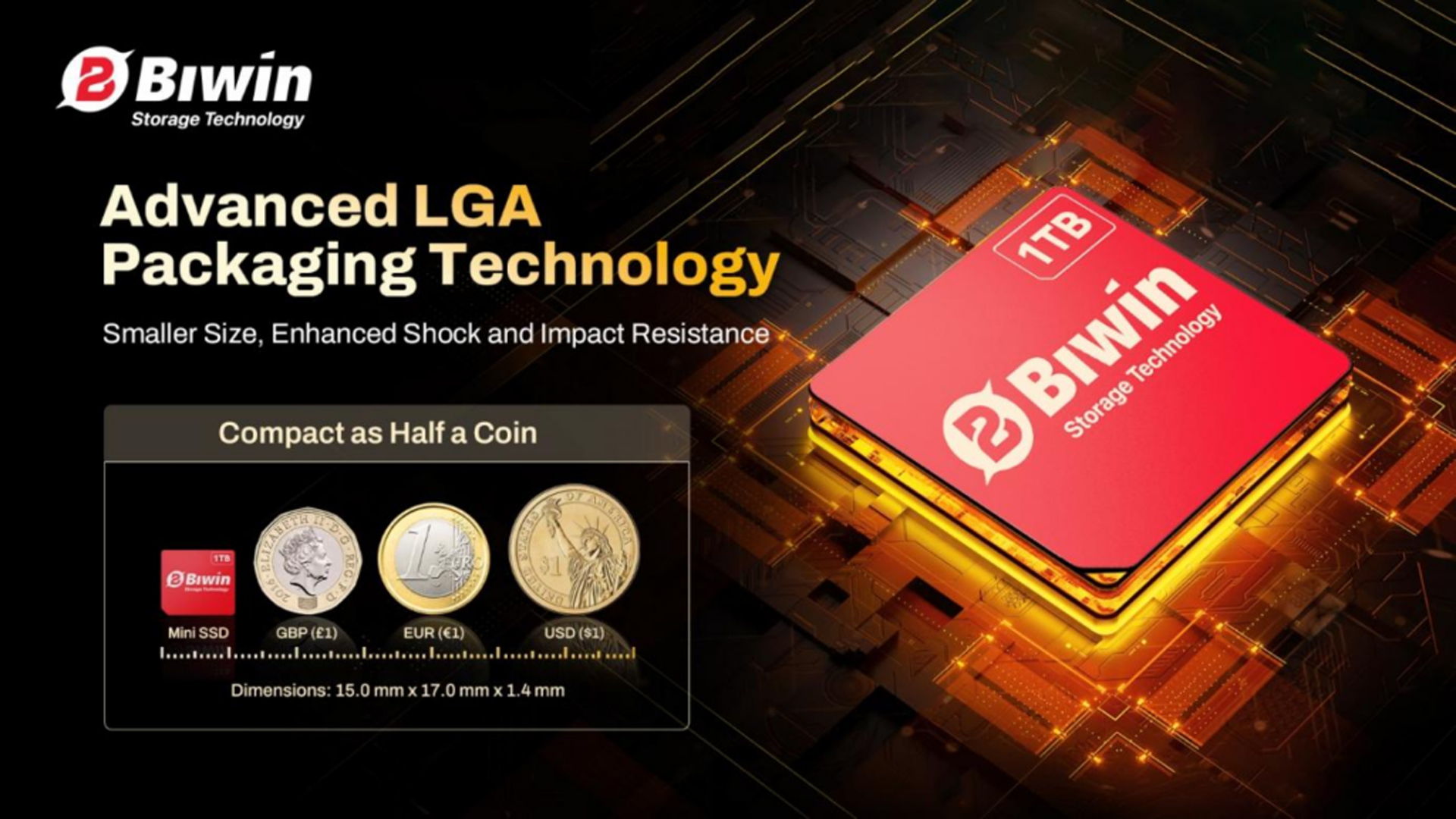China introduces up to 2TB 'Mini SSD' that's 3X faster than the microSD Express used in the Switch 2, but smaller — tiny '1517' SSD is just 15x17mm and boasts impressive performance claims
This tiny SSD can let you install AAA games on an external card slot.

Chinese gaming console makers have just taken the covers off a new external storage solution that rivals the microSD Express used by Nintendo for the Switch 2. According to The Verge, this new SSD form factor is more than three times faster than the microSD Express while keeping a footprint that’s only slightly larger. Storage manufacturer Biwin calls it the Mini SSD, while another OEM tagged it as the 1517, which refers to its dimensions and is similar to how JEDEC, the Joint Electron Device Engineering Council that defined the M.2 form factor, named other SSD form factors, like 2280, 2242, and 2230.
The so-called Mini SSD has a theoretical maximum sequential read speed of 3.7 GB/s and write speed of 3.4 GB/s. It connects to your system via PCIe 4.0 x2 and is currently offered at 512GB, 1TB, and 2TB. By comparison, microSD Express can only support a maximum transfer speed of up to 985 MB/s. Full-sized SD Express cards can have a theoretical maximum transfer speed of 3,940 MB/s, making them marginally faster than the 1517 — but they’re over three times larger than the tiny Mini SSD.
The Nintendo Switch 2 is the first device that uses the microSD Express standard, with stocks for the memory card selling out soon after the console’s announcement. So, it’s just appropriate that handheld gaming consoles are also among the first ones to use Mini SSD. GPD showed off its 1517 card slot on the Win 5, its latest handheld gaming console that features the powerful AMD Strix Halo chip, which mounts the SSD on a tray similar to how you'd expect to find a SIM card in a phone. The upcoming OneXPlayer Super X is also said to have a similar slot, making fast storage expansion on tiny and portable devices much easier.
Biwin says that this storage solution is available for laptops, phones, tablets, cameras, and nearly every other device that can accept a card slot. Aside from that, it also has an IP68 protection rating, making it perfect for flagship devices and action cameras. However, it should be noted that the 1517 isn’t a JEDEC standard yet, so there’s no telling if and when this will be adopted globally.
We don’t have pricing information yet about Mini SSD cards or their compatible readers. However, we hope that this technology eventually makes its way to more devices, as we certainly appreciate the small package and fast read and write speeds that it offers.
Follow Tom's Hardware on Google News to get our up-to-date news, analysis, and reviews in your feeds. Make sure to click the Follow button.
Get Tom's Hardware's best news and in-depth reviews, straight to your inbox.

Jowi Morales is a tech enthusiast with years of experience working in the industry. He’s been writing with several tech publications since 2021, where he’s been interested in tech hardware and consumer electronics.
-
wakuwaku Tom's AI:Reply
China introduces up to 2TB 'Mini SSD' that's 3X faster than the microSD Express used in the Switch 2, but smaller
The Verge article that this Tom's article is supposedly "quoting":
it measures just 15mm x 17mm x 1.4mm thick, smaller than a U.S. penny and just slightly larger than MicroSD.
The table on The Verge also CLEARLY shows the mini ssd is bigger than a micro sd with RAW NUMBERS.
Conclusion:
Please retrain your AI dear Mr Tom. Clearly summarizing a pretty short article with an EASY TO READ TABLE is too hard. -
usertests ReplyHowever, it should be noted that the 1517 isn’t a JEDEC standard yet, so there’s no telling if and when this will be adopted globally.
If it actually catches on globally, it will be an epic humiliation for the SD Association, which was already being eaten alive by CFexpress in camera equipment.
microSD can theoretically use PCIe 4.0 x1 for 1969 MB/s, half that of full SD. But it's nowhere in sight. Getting supported in Switch 2 was already a miracle that will help keep the cards alive. -
jlake3 Reply
That feels like a very big "IF". The fact that we've had two PCIe-based solutions in two sizes each and both have struggled heavily to break into the mainstream suggests that there's something more to this than speed and footprint that's not working.usertests said:If it actually catches on globally, it will be an epic humiliation for the SD Association, which was already being eaten alive by CFexpress in camera equipment.
microSD can theoretically use PCIe 4.0 x1 for 1969 MB/s, half that of full SD. But it's nowhere in sight. Getting supported in Switch 2 was already a miracle that will help keep the cards alive.
SD Express and CFexpress are still faster at the high-end, MicroSD Express still takes up less physical size on the 'portability at all costs' end while card costs also benefit from the scale of having Nintendo behind it... while 1517 lands somewhere in the middle specs-wise, and is building an ecosystem from scratch while SD Express/MicroSD Express slots are backwards compatible. I just don't see why this option would suddenly catch on now. -
watzupken On paper, yes it is fast. In reality, I think this will throttle badly. Modern SSDs run hot without decent passive cooling. Having used 2230 and 2242 SSDs, they can be super hot and throttle. In such a small size and no cooling, I seriously doubt it can sustain that kind of speed.Reply
